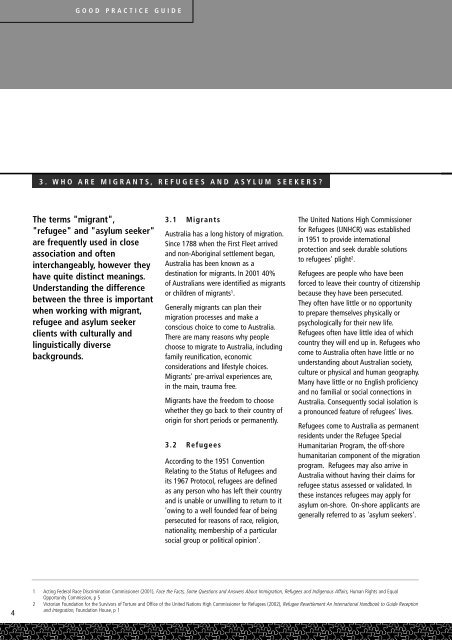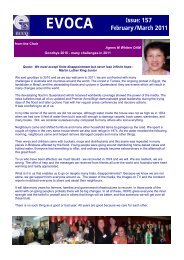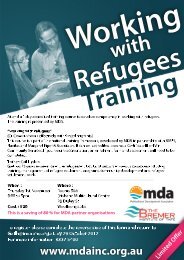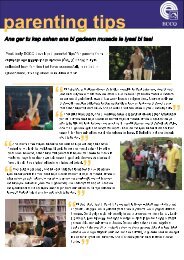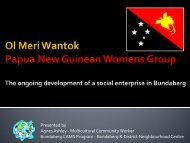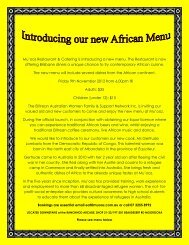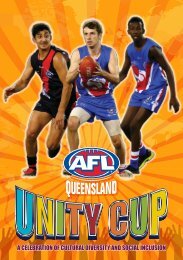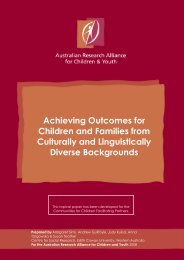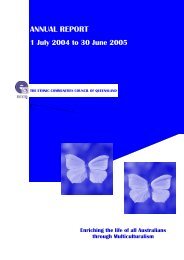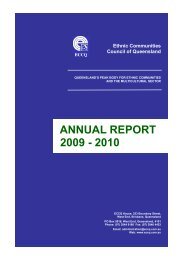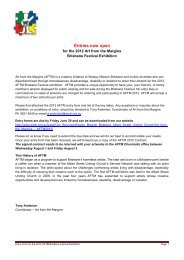Good Practice Guide
CALD Good practice guide
CALD Good practice guide
Create successful ePaper yourself
Turn your PDF publications into a flip-book with our unique Google optimized e-Paper software.
GOOD PRACTICE GUIDE<br />
3. WHO ARE MIGRANTS, REFUGEES AND ASYLUM SEEKERS?<br />
The terms "migrant",<br />
"refugee" and "asylum seeker"<br />
are frequently used in close<br />
association and often<br />
interchangeably, however they<br />
have quite distinct meanings.<br />
Understanding the difference<br />
between the three is important<br />
when working with migrant,<br />
refugee and asylum seeker<br />
clients with culturally and<br />
linguistically diverse<br />
backgrounds.<br />
3.1 Migrants<br />
Australia has a long history of migration.<br />
Since 1788 when the First Fleet arrived<br />
and non-Aboriginal settlement began,<br />
Australia has been known as a<br />
destination for migrants. In 2001 40%<br />
of Australians were identified as migrants<br />
or children of migrants 1 .<br />
Generally migrants can plan their<br />
migration processes and make a<br />
conscious choice to come to Australia.<br />
There are many reasons why people<br />
choose to migrate to Australia, including<br />
family reunification, economic<br />
considerations and lifestyle choices.<br />
Migrants' pre-arrival experiences are,<br />
in the main, trauma free.<br />
Migrants have the freedom to choose<br />
whether they go back to their country of<br />
origin for short periods or permanently.<br />
3.2 Refugees<br />
According to the 1951 Convention<br />
Relating to the Status of Refugees and<br />
its 1967 Protocol, refugees are defined<br />
as any person who has left their country<br />
and is unable or unwilling to return to it<br />
'owing to a well founded fear of being<br />
persecuted for reasons of race, religion,<br />
nationality, membership of a particular<br />
social group or political opinion'.<br />
The United Nations High Commissioner<br />
for Refugees (UNHCR) was established<br />
in 1951 to provide international<br />
protection and seek durable solutions<br />
to refugees' plight 2 .<br />
Refugees are people who have been<br />
forced to leave their country of citizenship<br />
because they have been persecuted.<br />
They often have little or no opportunity<br />
to prepare themselves physically or<br />
psychologically for their new life.<br />
Refugees often have little idea of which<br />
country they will end up in. Refugees who<br />
come to Australia often have little or no<br />
understanding about Australian society,<br />
culture or physical and human geography.<br />
Many have little or no English proficiency<br />
and no familial or social connections in<br />
Australia. Consequently social isolation is<br />
a pronounced feature of refugees' lives.<br />
Refugees come to Australia as permanent<br />
residents under the Refugee Special<br />
Humanitarian Program, the off-shore<br />
humanitarian component of the migration<br />
program. Refugees may also arrive in<br />
Australia without having their claims for<br />
refugee status assessed or validated. In<br />
these instances refugees may apply for<br />
asylum on-shore. On-shore applicants are<br />
generally referred to as 'asylum seekers'.<br />
4<br />
1 Acting Federal Race Discrimination Commissioner (2001), Face the Facts, Some Questions and Answers About Immigration, Refugees and Indigenous Affairs, Human Rights and Equal<br />
Opportunity Commission, p 5<br />
2 Victorian Foundation for the Survivors of Torture and Office of the United Nations High Commissioner for Refugees (2002), Refugee Resettlement An International Handbook to <strong>Guide</strong> Reception<br />
and Integration, Foundation House, p 1


